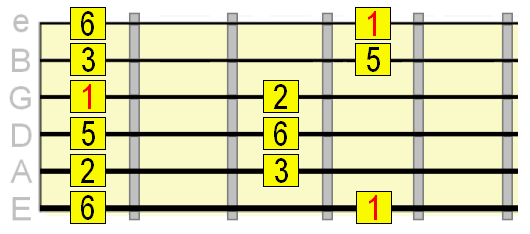The
Major Pentatonic
Mode
Theory
Let's first learn the building blocks of
Major Pentatonic
and where it comes from. As the name denotes,
major penta-tonic is a major scale with just five tones. Like every scale,
Major Pentatonic
can be given
a whole and half step interval formula that tells us the "distance" between each tone in the scale
starting on a given root (1).
W = whole step/tone. WH = whole + half step/tone.
Major Pentatonic
interval formula. So whatever root note you start on, the scale sequence remains the
same from that position: W W WH W WH
Why does the scale miss out a 4 and jump straight to 5? Because
Major Pentatonic
does not include a 4th interval, due to how it's
formed. You'll understand this in greater detail in time.

Major Pentatonic
does not include a 4th interval, due to how it's formed. You'll understand this in greater detail in
time. The root corresponds to the letter we use before the scale name. For example, if the root was C, we'd have C
Major Pentatonic
. If the root was E, we'd have E major pentatonic. This whole/half step can be visualised across a
single string on the guitar. For example, the open G string would provide the root of G, and we'd continue the scale
from there up to the 12th fret G octave...



